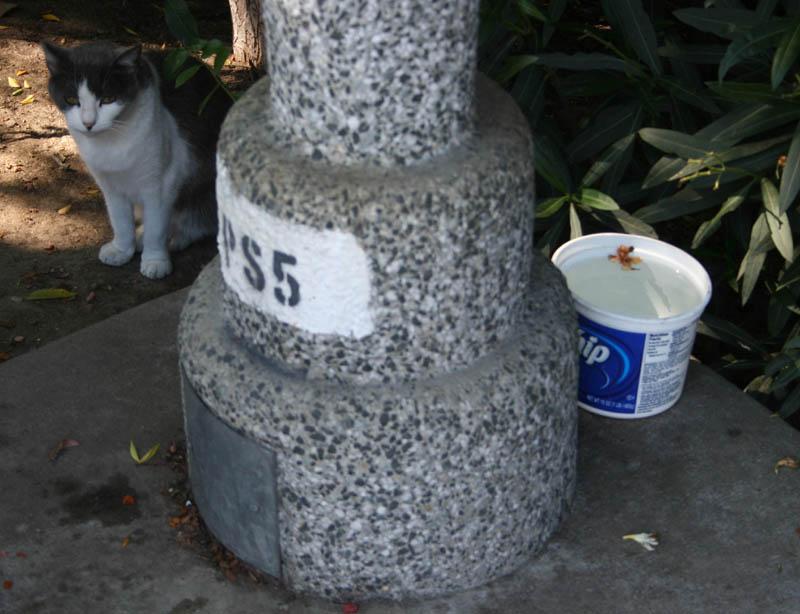With the reduction of the feral cat population and recent mice sightings, some may think while the cats are away the mice will play, but university officials maintain that this is not the case.
Outside and inside the Social Science and Political Affairs building, mice have been seen and reported by staff members to Cal State Long Beach Physical Planning and Facilities Management. In December, two mice were trapped and disposed of and one in January — all of which were caught via covered sticky traps at the SSPA building, according to David Salazar, associate vice president of Physical Planning and Facilities Management.
“There’s always been mice in the area,” Salazar said. He emphasized that rodents are always around, and the decreasing number of cats on campus has nothing to do with the recent mice reports.
“Our position is that there isn’t a correlation between the two,” he said.
Last semester the university ordered cat advocates to actively reduce the cat population after coyotes came to campus to feed on the feral animals in summer 2008.
The university administration set regulations on the feeding times and mandated any shelters to be removed by fall 2008. Feeding stations were also moved to the outskirts of campus, with the exception of one located near Brotman Hall, as well as reduced to fewer than 15.
One of the larger feeding stations, which included beds and shelters, was located outside the SSPA building, but was removed with the new mandates.
“It’s probably far from coincidence that there are mice in those areas,” said President of the Beach Cats organization, James Bryan, a sophomore international business major.
Salazar could not provide documentation of when mice traps have been set up or when mice have been caught on campus. Knowing the nature of mice, especially since there are food services on campus, “I would think there have been mice traps set out before,” Salazar said.
Bryan also said that Beach Cats has not been satisfied with the help the university has been giving them, which is strictly to “oversee the authorization and/or removal of each feeding station,” according to an Oct. 5 article in the Daily Forty-Niner.
“They’ve done really nothing,” Bryan said.
He estimates the population to be around 50-70 cats. In summer the population of cats was approximately 150.
Salazar said he was not sure how the university has not been cooperating.
“As far as I know at this point in time we have been responsive. We are open to discuss any concerns [Beach Cats] may have for fulfilling the agreement.”
Bryan said they are looking into ways of tagging the cats, so they can continue to reduce the cat population through trap, neuter/spay, release methods.
Bryan said they want to continue to reduce the number “because that’s what the school wants and seemingly what the students want.”
He said Beach Cats also “want[s] a positive end for the cats,” which is why they’re looking into other adoption programs for the cats.
At the organization fair last week close to 100 students signed up to join Beach Cats, while currently four students feed and change the water at the stations.





Wolf Blitzer needs to look over his shoulder.
p.s. I think you are doing a GREAT JOB!!!!
Is sspa the society for prevention of animals?
You did an awesomeow job on this story, Joanne. I love the lede.
-Peace